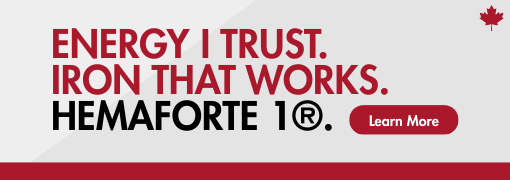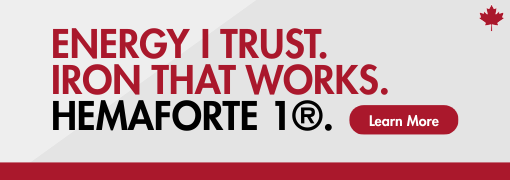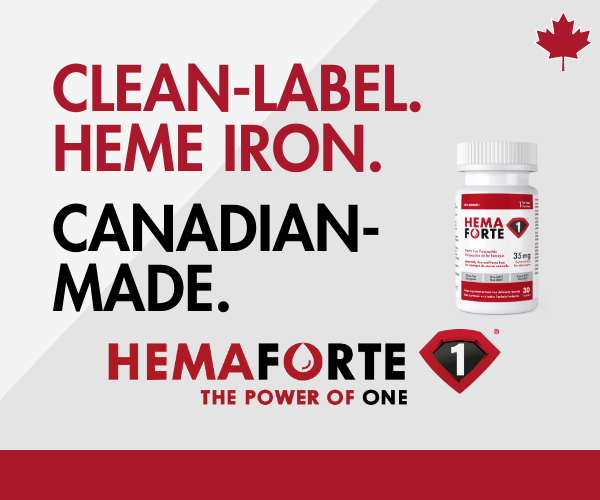The Facts
Osteoporosis is a bone disease where parts of the bone become weak and prone to fracture. This condition is more common in seniors, but can affect men and women of all ages. Osteoporosis is responsible for a large number of bone fractures that occur in seniors, as the weakened bones can no longer support their body weight.
While men also develop osteoporosis, this condition is particularly common among women who have reached menopause. The increased risk at menopause reflects the fact that the hormone estrogen, a key factor in maintaining bone strength in women, is no longer produced by the ovaries after menopause.
Because women have 30% less bone mass than men, women are particularly prone to osteoporosis as they age. However, after reaching 65 to 70 years of age, men and women lose bone at about the same rate. Eating enough foods rich in calcium and vitamin D and participating in weight-bearing exercises are important steps in preventing osteoporosis.
Causes
Bone is made up mostly of minerals such as calcium. The bones in our bodies are constantly being broken down and replaced with new bones. This bone-building cycle takes about 100 days and is influenced by the hormones produced in our bodies (such as estrogen in women) as well as by the levels of calcium and vitamin D. Osteoporosis occurs when bone tissue and minerals are lost faster than the bone is replaced.
In Canada, at least 1 in 3 women and 1 in 5 men will have a fracture due to osteoporosis during their lifetime.
Factors that may increase the risk of osteoporosis include:
- drop in estrogen after menopause: The rate of bone loss increases significantly after menopause because the ovaries stop producing estrogen, a hormone that plays a major role in the bone repair process. Female athletes and women who suffer from anorexia nervosa may also be at increased risk for osteoporosis. In both cases, the menstrual cycle is disrupted or lost and levels of estrogen in the body drop dramatically. Women who experience early menopause (before 45 years of age) are more likely to have osteoporosis.
- family history and body type: Osteoporosis tends to run in families, and the risk of this condition is greater for individuals with elderly relatives who have had more than one bone fracture. People of European and Asian descent are most at risk. People who are thin or "small-boned" also have a higher risk of osteoporosis. People who have had a fracture in the vertebrae, or who have first-degree relatives with hip fractures later in life, are also at increased risk.
- lifestyle factors and health conditions: Lifestyle factors such as smoking and excessive alcohol and caffeine intake, taking specific medications (such as corticosteroids), and having certain medical conditions (such as those that affect nutrition absorption [e.g., Crohn's disease, celiac disease], primary hyperparathyroidism, rheumatoid arthritis, and hypogonadism) may also contribute to bone loss. People with type 2 diabetes are more likely to suffer a hip or shoulder fracture than those without diabetes.
- lack of exercise: The bone is a living tissue that, like the muscles, gradually become stronger with exercise. People who are physically active are less at risk of developing osteoporosis, as their bones are stronger and less likely to lose strength with age. By contrast, a person who is bedridden or inactive for a lengthy period of time loses bone mass very quickly and is at high risk of osteoporosis.
- lack of calcium or vitamin D: Calcium and vitamin D are very important in the maintenance of healthy and strong bones throughout life and in the prevention of osteoporosis. Vitamin D helps the body increase absorption of calcium. In Canada, we don't get enough sun to produce sufficient vitamin D, particularly during winter months, and it is very difficult to get enough vitamin D through diet alone.
Symptoms and Complications
Osteoporosis itself does not usually cause noticeable symptoms. However, weakened bones can break much more easily, such as with a minor fall. Fractures most commonly occur in the hipbones, wrists, or spine. Hip fractures are more frequent in people over the age of 65 years.
Some fractures caused by osteoporosis, such as hairline breaks in the spine, may cause little or no pain and may go unnoticed, even when they show up on an X-ray. By contrast, spinal compression fractures, where the vertebral column crumbles or collapses (usually in the front, resulting in a wedge shape), are much more painful and can lead to deformed posture and height loss.
Another symptom caused by osteoporosis is chronic back pain. This pain can worsen even when you are making small movements such as regular activities around the house, or while coughing, laughing, or sneezing. You may even feel pain when you are standing still. People who are very bent over with a "hump" at the top of their backs are usually suffering from spinal compression fractures from osteoporosis.
Making the Diagnosis
The key steps for diagnosing osteoporosis involve assessing your risk for fracture and evaluating your bone density.
If your doctor determines that you do have risk factors for fracture or osteoporosis (such as being 65 years or older or having had a fracture in the past), there are several effective and relatively quick tests that measure bone mineral density (BMD). If the results show that your bone density is too low, your doctor will likely diagnose you with osteoporosis.
Bone density measurement by a method called DXA (dual energy X-ray absorptiometry) is the most effective way to assess osteoporosis risk. Scanning parts of the body such as the hips or spine using a special type of X-ray machine can confirm you have an increased risk of fractures. The test compares your bone density to that of a typical healthy adult at age 25, the usual age of maximum bone density.
Sometimes a computerized tomography (CT) scan or a heel ultrasound may also be used to check the condition of the bones.
Following the diagnosis of osteoporosis, further studies are needed to look for possible causes. An examination to determine such causes might involve blood and urine tests to measure the levels of calcium, vitamin D, and certain hormones, such as parathyroid hormone and thyroid hormone, produced in the body, as well as questionnaires on lifestyle and diet, to determine your daily intake of calcium and vitamin D.
There are also two tools (CAROC and FRAX) available in Canada for your doctor to use to calculate an estimate of future risk of fracture or bone breaking in the next 10 years. To determine your personal risk of fracture over the next 10 years, your doctor will take into consideration key risk factors which may include: age, gender, body mass index, fracture history, family history, use of corticosteroids, smoking status, and alcohol intake.
If your doctor decides that you require medication to treat osteoporosis, BMD testing may be conducted every 1 to 3 years to see if the therapy is working. Once the medication is shown to be effective, you may not need to be tested as often. BMD testing may also be repeated to monitor for rapid bone loss in people who are not started on medications for osteoporosis but are at risk for developing the disease.
Treatment and Prevention
Treatment of osteoporosis is aimed at preventing or reducing bone fractures and maintaining or increasing bone density. There are several treatments for osteoporosis, but prevention is still very important. Many of the treatment and prevention strategies for osteoporosis are similar.
Maintenance of good bone strength requires that you have a regular intake of calcium and vitamin D. Osteoporosis Canada recommends 1,000 mg of elemental calcium daily (diet plus supplements) for men between the ages of 51 and 70 years, and 1,200 mg for men over the age of 70 years and women over the age of 50 years. They recommend 600 IU of vitamin D daily for adults between the ages of 51 and 70 years who are not at high risk of osteoporosis, and 800 IU for both adults over the age of 70 and people at high risk of osteoporosis. Vitamin D supplements are widely available.
Osteoporosis Canada also recommends a healthy lifestyle with no smoking or excessive intake of alcohol, as well as 3 types of exercise: strength training, balance exercises, and exercises that focus on improving your ability to complete day-to-day activities.
Strength exercises, also known as resistance training, can be done with weights or exercise bands. These exercises play a role in strengthening muscles and bones. Your balance can be improved through exercise and can significantly reduce the risk of bone fractures. Functional exercises, such as doing chair stands to help you stand up more easily and stair-climbing to prepare for hikes, can make it easier for you to do the activities that are important in your life.
There are several medications that can be used to treat osteoporosis. Many of these treatments may also be used to prevent osteoporosis for people who are at high risk of developing it. The following are some of the osteoporosis medications available in Canada:
- bisphosphonates (e.g., alendronate, risedronate, zoledronic acid): These are one of the main groups of medications that may be used to prevent and treat osteoporosis. These medications slow down bone loss and help repair bone, reducing the chance of fracture.
- selective estrogen receptor modulators (SERMs; e.g., raloxifene): These may also be used to prevent and treat osteoporosis in women.
- denosumab: Given as an injection, denosumab is part of a class of medications called RANK ligand inhibitors. It stops the breakdown of bone, helping to strengthen your bones and lowering the chances of fracture.
- hormone-replacement therapies (HRTs): A variety of HRTs are available for those who have reached menopause. Estrogen replacement helps to preserve bone and manage menopausal symptoms, but the therapy has a number of health risks. If you are taking or are considering taking HRT, talk to your doctor about the risks and benefits.
- parathyroid hormone analogues (e.g., teriparatide): This class of medication builds new bone faster than it breaks it down, and can be used to treat severe osteoporosis.
- romosozumab: This belongs to a new class of medications called sclerostin inhibitors. It is an injectable given monthly that reduces fracture risk by increasing bone formation and decreasing bone resorption.
Two or more medications may also be used in combination to treat some cases of osteoporosis. In addition, doctors usually recommend that you continue to get enough calcium and vitamin D.
*All medications have both common (generic) and brand names. The brand name is what a specific manufacturer calls the product (e.g., Tylenol®). The common name is the medical name for the medication (e.g., acetaminophen). A medication may have many brand names, but only one common name. This article lists medications by their common names. For information on a given medication, check our Drug Information database. For more information on brand names, speak with your doctor or pharmacist.
All material copyright MediResource Inc. 1996 – 2026. Terms and conditions of use. The contents herein are for informational purposes only. Always seek the advice of your physician or other qualified health provider with any questions you may have regarding a medical condition. Source: www.medbroadcast.com/condition/getcondition/Osteoporosis


